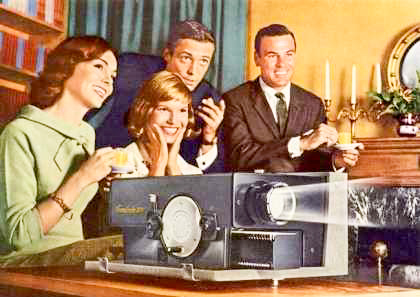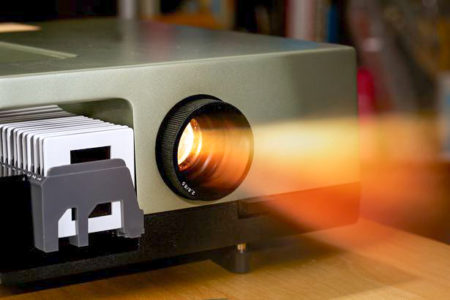How many of you remember as a kid attending the home slide shows your parents put on for family, friends, and neighbors? If you’re a baby boomer like us, you’ll likely recall your father pulling the screen out of the front hall closet, extending the legs, and then unrolling the white screen to attach to the hook on the vertical arm. Then he unboxes the slide projector, places it on one of those small fold-up tables, and plugs it in. Next comes the multiple box trays with slides that have been carefully inserted into their slots in an order in which father wants to narrate. (The carousel slide tray was the next generation of new technology.) A test drive had to be performed before the guests arrive. The projector is turned on and carefully calibrated to ensure it is at the proper distance from the screen and in focus.

So, the screen show is all set, Mom has made the hors-d’œuvres (we call them appetizers since it’s easier to spell), and Dad has set up the bar. Now all that is needed are the guests. At the appointed hour, everyone arrives. After the chit-chat, Dad calls everyone to the living room. Everybody settles back, begins to knock down their third martini or whiskey sour, and lights up their favorite smoke. (Remember, back then, everyone smoked.) Dad turns on the projector with its familiar fan sound and exhaust fumes that compete with the smoke from the cigarettes and pipes. The first slide goes up on the screen and through the haze of smoke, the title of the evening’s entertainment is displayed:
Stew and Sandy’s Summer Vacation in Paris
So, kids, fill up your bowl with popcorn, settle into your favorite recliner, make sure your glass is full, and get ready for your slide show.

Did You Know?
Did you know that the last living World War II Medal of Honor recipient died on 29 June 2022? Hershel “Woody” Williams (1923−2022) was ninety-eight when he passed away at the VA Medical Center in Huntington, West Virginia. (The hospital was named for him.) Woody joined the Marines in 1943 and became a demolition operator. During the Battle of Iwo Jima, he volunteered to clear an area riddled by Japanese machine gun fire that hindered the advancement of troops. Read More Stew and Sandy’s Summer Vacation in Paris

